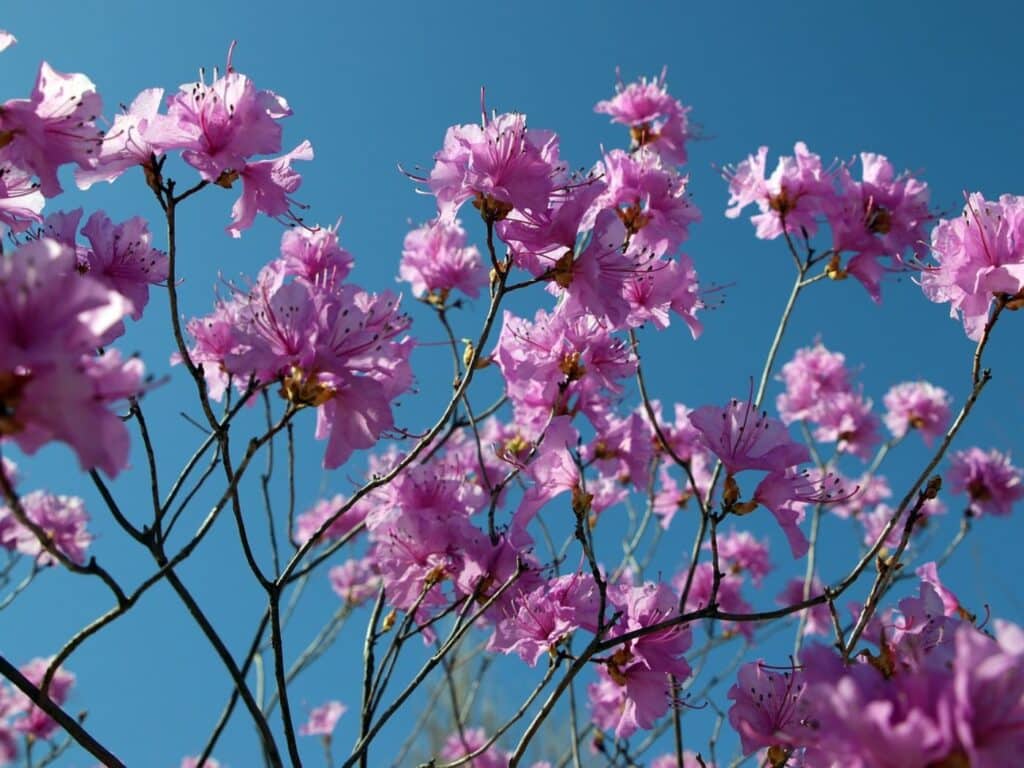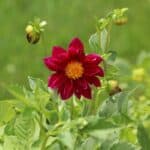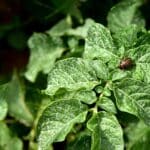If you love large flowering shrubs, Azaleas (Rhododendrons) should have a place in your garden. These flowering plants are a favorite in ornamental gardens because they create striking blooms during fall and spring and grow very well in shady areas.
Azaleas look their absolute best if you pair them with other plants that can create some contrast or conceal the base of these shrubs. These friendly florals can be paired with a massive variety of companions.
In this guide, we will look at some of the best companion plants to grow with Azalias if you want these flowering shrubs to flourish or if you’ll make those beautiful blooms pop during the flowering season.
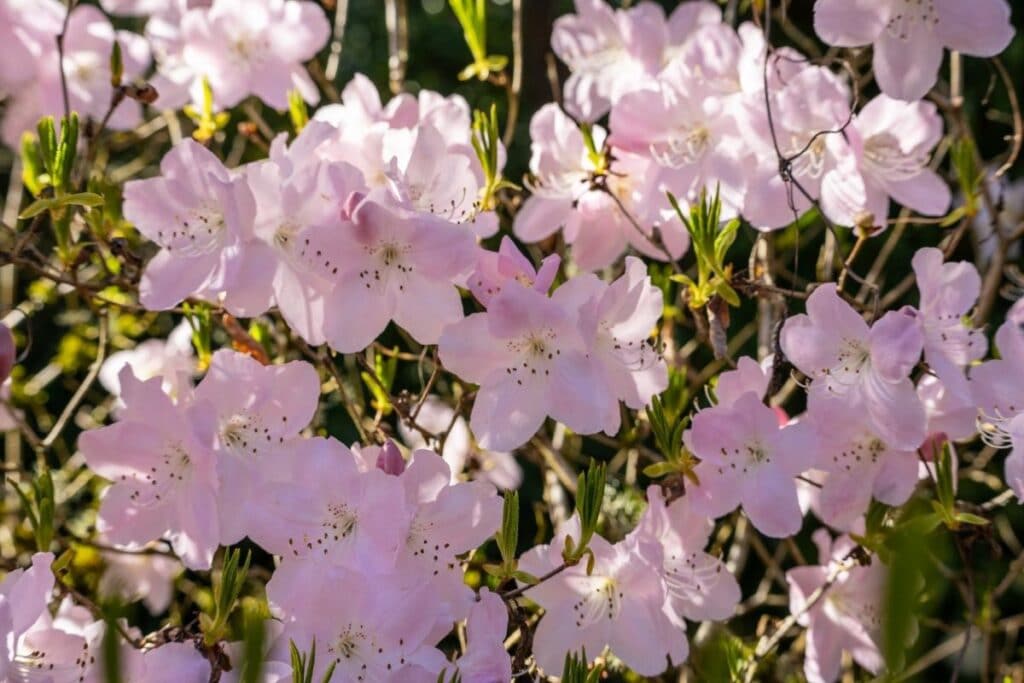
What to Grow with Azaleas
There are thousands of different species of Azaleas. Some species will only grow up to 1 meter tall, while others can form large trees up to 30 meters tall and can be found in evergreen or deciduous form in a huge variety of colors.
This huge variety of brush species can offer landscaping designers a lot of flexibility, but it also means you must be careful when choosing companion plants. Some types may not look as attractive as other plants in your garden.
The best way to identify suitable companion plants for azaleas is by considering the growing requirements for these plants.
Azaleas prefer partial shade since they only endure 2 – 6 hours of direct sun. They prefer well-fertilized loam soil with good drainage and a high pH of 4.5 – 6. This attractive foliage also needs regular watering. It is always best to pair this attractive foliage with plants that grow well in the same conditions.
Let’s look at the best foliage to include when you plant azaleas.
Hydrangeas
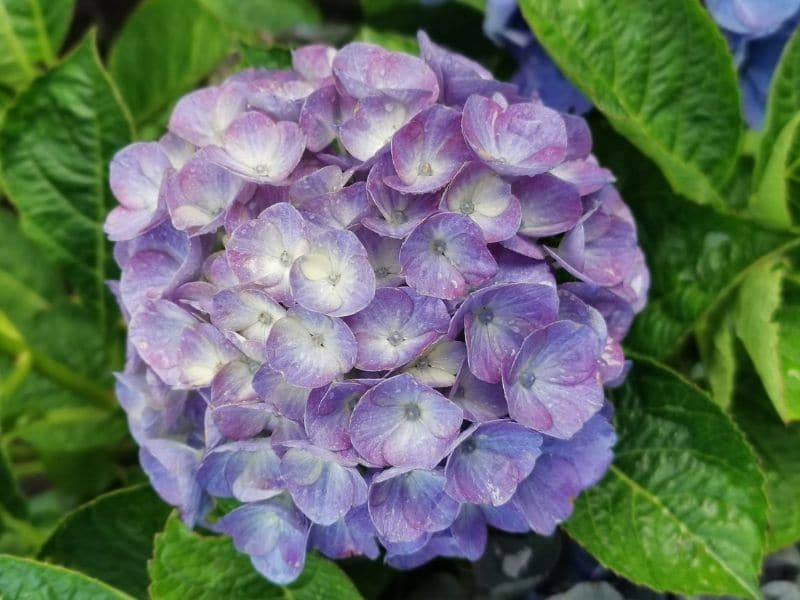
French hydrangeas (Hydrangea macrophylla) are excellent companion plants for azaleas to create a thick border of showy shrubs in your garden.
These flowering shrubs will look divine alongside azaleas because they also form vivid blooms. They are often called snowball bushes because they produce ball-shaped clusters of flowers. Various colors are available, and the floral colors can be altered by changing the soil pH or adding certain fertilizers.
The snowball bush flowers will create plenty of texture alongside the large single or double florals of the azaleas.
These two shrubs have similar blooming seasons and are sure to create spectacular displays from spring to fall. During this time, they will also attract pollinators like butterflies and hummingbirds to your beautiful garden.
These plants will grow alongside azaleas because they prefer acidic soil and grow well in dappled sunlight. Hydrangeas can grow up to 2 meters tall. For optimal results, it is usually best to grow hydrangeas alongside azaleas with a similar height or in front of taller azaleas.
Barberry Shrubs

Barberry shrubs (Berberis buxifolia) are a good option if you are looking for companion plants that will create more texture and contrast in your garden. These plants help form hedges, conceal unsightly areas, or enhance your garden’s winter interest.
Japanese barberry plants are available in different subspecies, which include varieties with red, lime, silver, gold, deep maroon, or dark green foliage, and the hue of the foliage can change during different seasons.
This leafy shrub can be found in evergreen or deciduous form and produces many branches with a medium to fine texture. The foliage forms yellow blooms followed by bright red berries that will ripen and lure pollinators to your garden during wintertime.
When choosing a good variety of barberry, it is usually best to focus on something that will create plenty of contrast with the dark green foliage of the azaleas in the background.
It is also best to establish your barberries in sunny parts of your garden while the azaleas remain in the back since these shrubs form better displays of color if they are grown in full sun.
These azalea companion plants can reach up to 2 meters tall. But they are fairly easy to trim back and keep shorter if you want to create a border in front of taller plant varieties in the back.
Mountain Laurel
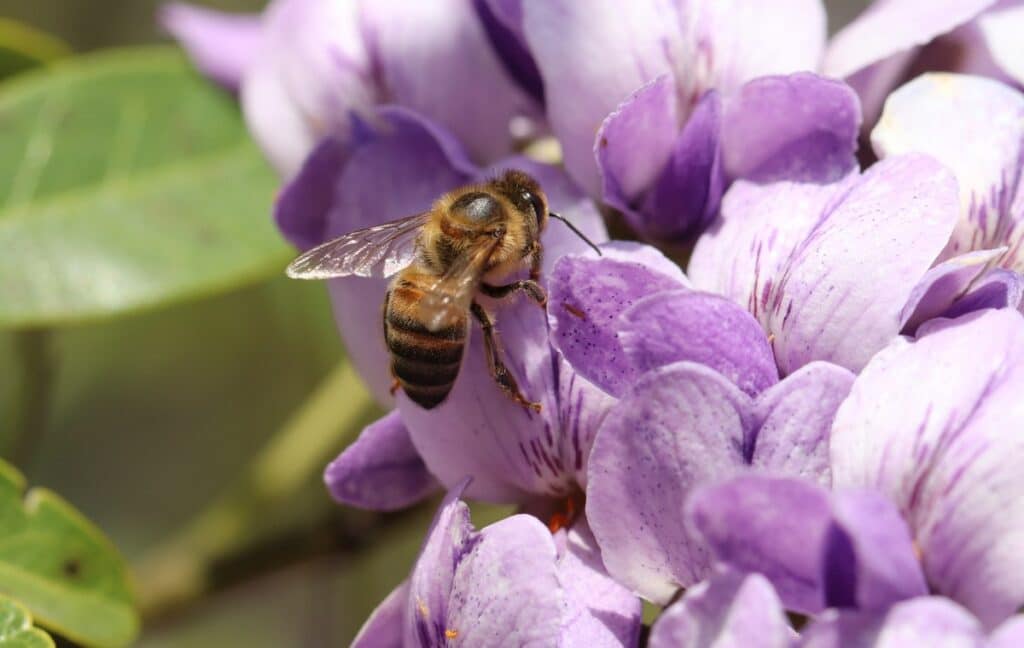
Mountain laurels (Kalmia latifolia) are attractive flowering brushes that you can grow alongside or in front of a hedge or barrier of azaleas.
This evergreen foliage forms large clusters of blooms in colors like off-white, pink, scarlet, rose, or Burgandy. They bloom during late spring and early summer and can brighten your garden while you wait for your azaleas to begin their flowering season. When this brush forms early spring bulbs, it will attract beautiful butterflies and other pollinators to your garden.
This shrub grows well in USDA zones 5 – 9 and in dappled sun (although they can grow in deep shade or even full sun).
The forestry shrub can grow up to 4 meters tall but typically only reach a height of 1 meter. With his size, you should pair mountain laurels in front of azaleas or plant them alongside azalea varieties with a similar height.
Dogwood Trees
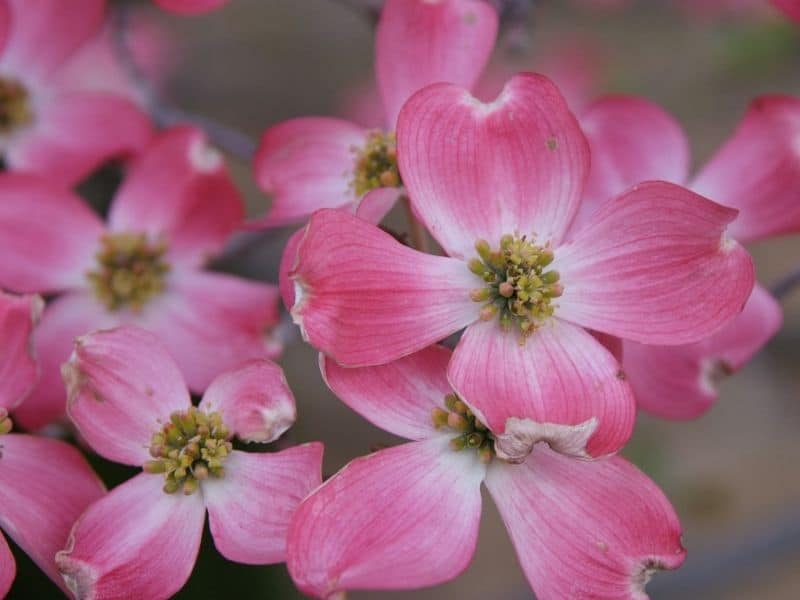
Dogwood trees (Cornus Florida) are ideal companion plants if you want something to grow behind short azaleas or alongside tall varieties of azalea.
These floral trees are a real treat for the eye when they bloom in spring or early summer, but they will add lots of interest to your garden since the perennial’s foliage can look appealing throughout the year.
During the bloom time, dogwood trees will form a massive explosion of white or pink flowers all over the tree. Those white flowers can create a beautiful backdrop if you pair them with azalea bushes with a contrasting color.
Dogwood trees can grow 20 – 40 feet tall (6 – 12 meters), while tall azalea varieties only grow up to 20 feet (6 meters) tall. Since your azalea shrubs will be shorter than dogwood trees, it is usually recommended to grow them around the dogwoods.
These trees will grow well with azaleas because they also grow well in full sun to partial shade, making them ideal companion plants for azaleas.
Spotted Dead Nettle
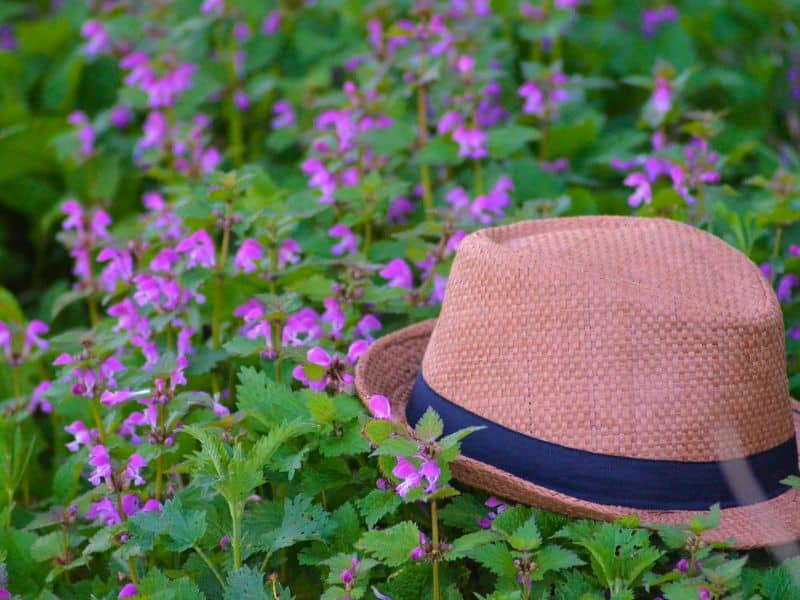
Dead Nettle (Lamium maculatum), often called beacon silver, is a good companion plant to grow around azalea bushes if you want to conceal the base of your azaleas or create a border around your floral shrubs.
Dead nettle is an ideal border plant for an azalea garden because the silvery foliage will create lots of contrast between the dark green foliage of azalea bushes.
This weed will also bloom throughout the year (with vigorous blooms from late spring to early summer) and create attractive purple flowers that look great when paired with complimentary florals like whites, reds, pinks, or purples.
These low-growing plants will only reach a height of about 10 – 20 cm (4 – 8 inches) but will thrive all over your azalea garden.
They are perfect garden fillers to cover bare areas underneath or around azaleas because these plants can grow well in light or even full shade and will serve as a living mulch to nourish the soil around these floral trees.
Witch Hazel
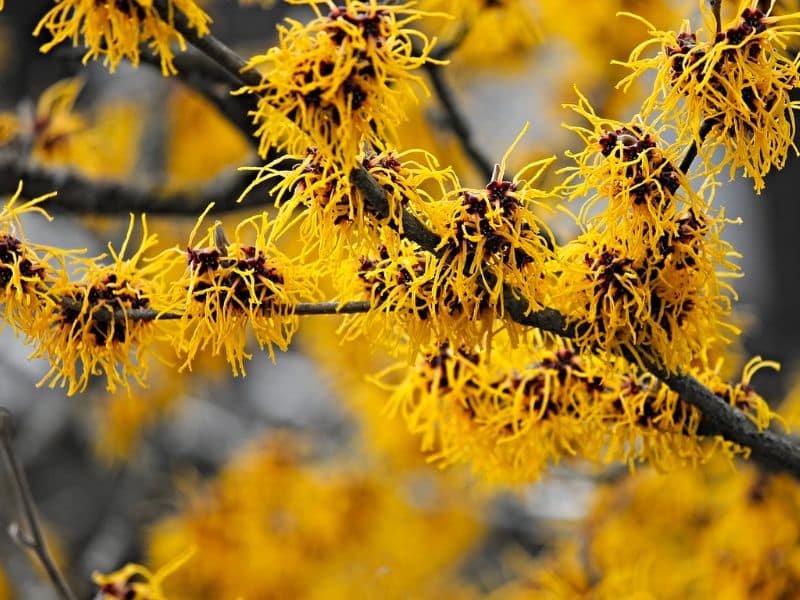
The witch hazel (Hamamelis) might scare some people, but this foliage is an excellent companion plant for azaleas. They will look neutral during summer, so your floral shrubs can pop. During the cooler seasons, they will add lots of winter interest because the leaves will turn golden yellow during fall.
American witch hazel has a fall bloom time and will produce many small yellow flowers with a spicy aroma. The tiny flowers have an interesting pattern with thin, spiky flower leaves that remind of spider legs.
These plants will become dormant in winter, but the woody shrub can look appealing and will add lots of contrast to your garden even in this stage.
These trees usually grow 15 – 30 feet (4 – 8 meters) tall. This height is similar to the height of azaleas, meaning it is better to grow witch hazel amongst your azalea shrubs. These acid-loving plants prefer full sun but can grow in shaded areas with regular watering.
Hostas
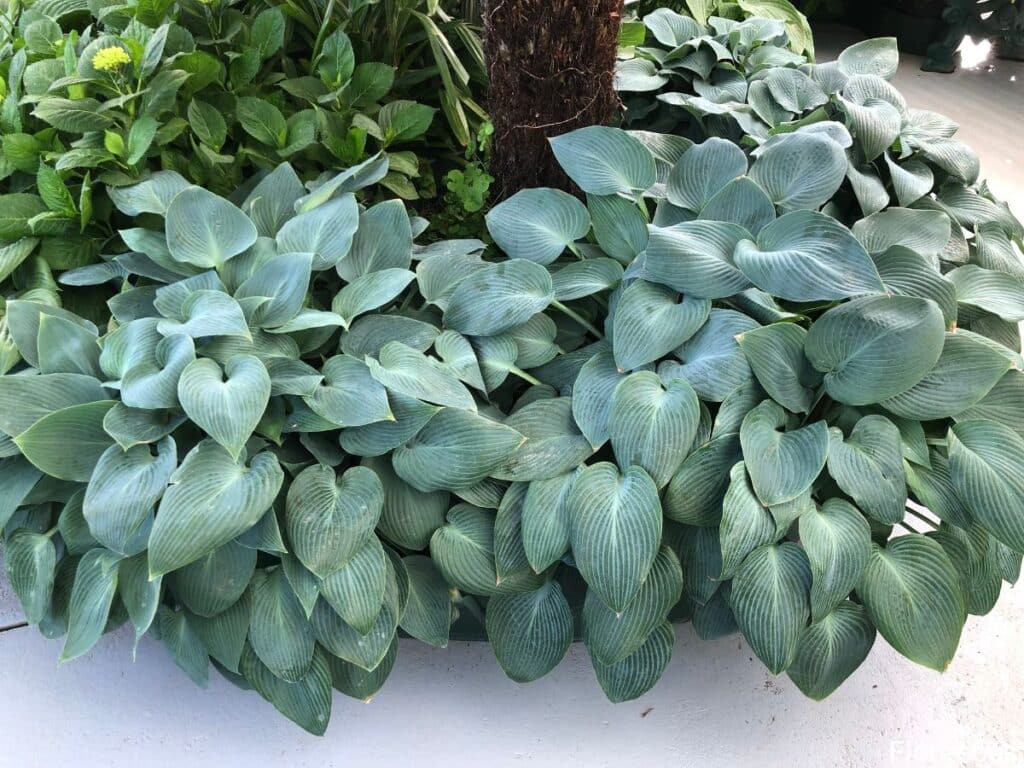
Hostas (Plantain lilies) are very popular in shaded gardens and are good for companion planting in an azalea garden. These low-profile plants are perfect for filling out a garden bed and giving your garden a full and lush appearance.
Hostas form many large leaves that add more texture to your garden beds. This plant has many varieties, and the green foliage can differ significantly from simple green leaves to ornamental leaves with different colors or patterns.
Plantain lilies will form bell-shaped flowers for about six weeks during late spring, creating a beautiful effect when grown along spring-blooming azaleas. Most people do, however, grow hostas for their attractive foliage and because they are so easy to propagate and establish.
These shade-loving plants grow well in moist, nutrient-rich soil and can be grown in light or even full shade. Their shade tolerance makes them perfect ground covers for azaleas and other shrubs, especially since they typically only grow up to 2 feet tall.
Boxwoods

Boxwoods (Buxus) are frequently grown companion plants for azaleas because they can be trimmed or shaped into hedges or orbs, adding lots of structure to your garden. This is extremely helpful since trimming azaleas isn’t practical, especially if you want lots of blooms.
The common boxwood is one of the oldest recorded plants to be used in ornamental gardening. It dates back to ancient Egypt, where Egyptians used this foliage to create beautiful garden hedges.
These brushes, with their yellow-green foliage, can be trimmed throughout the year without damaging the plant, and they can be cut to any shape or size.
Boxwoods typically grow 2 – 12 meters tall and have evergreen foliage to keep your garden vibrant even during dull winters. It is an ideal plant to grow for winter interest if perennial azaleas lose their leaves during winter.
Boxwoods grow very well in acidic soil, need well-drained soil, and they fare best when they only receive a little bit of morning sun with lots of afternoon shade. You can grow them as a border plant around azaleas or as a hedge in front of your florals.
Japonica
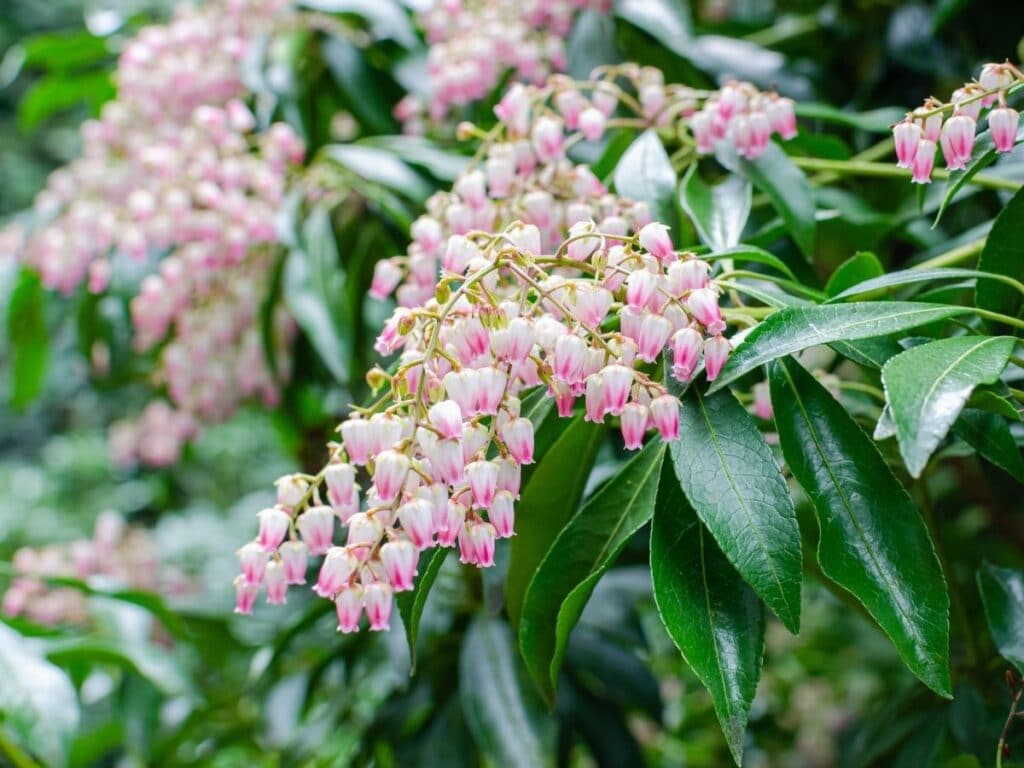
The Japonica (Pieris japonica) is another beloved shrub to grow alongside azaleas and rhododendrons because the leaves of this shrub will start bronze or red and later turn green. It will also produce urn-shaped or lantern-shaped flowers in colors like white or pink in early spring that can look very decorative alongside the azalea blooms. The colorful leaves and flowers can add year-round interest to your garden.
These floral shrubs prefer damp conditions, and they grow well in acidic soil types and can enhance your soil texture. The brush picks shaded conditions and can be successfully established in your azalea garden.
Japnoicas are shorter than many azalea varieties. They usually grow 9 – 12 feet (2.7 – 3.6 meters) tall, so it is usually best to grow azaleas behind these versatile shrubs.
Final Thoughts
Rhododendrons azaleas can look fantastic if grown with the right companion plants. There are quite a few gorgeous shrubs and florals that take well to the same acidic soil that azaleas need. We hope our guide made it easier for you to choose good companion plants for your shaded garden. If you want more information on other plant varieties to include in your garden, we welcome you to look at some of our other guides.
Learn more about Azalea symbolism to see why people love this plant!

